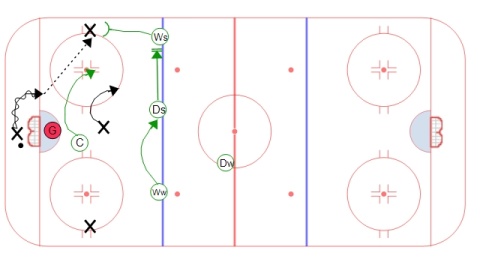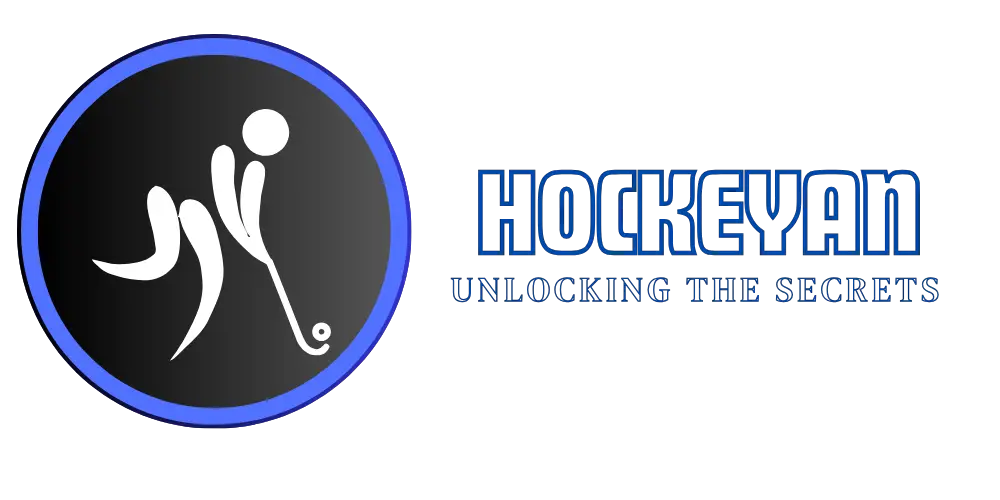A hockey forecheck is a strategic play. It involves putting pressure on the opposing team.
Understanding the forecheck is vital for both players and fans. Hockey is a fast-paced game that demands quick thinking and teamwork. One critical strategy is the forecheck. It helps teams regain possession and control the game. This tactic disrupts the opposing team’s flow and can lead to scoring opportunities.
Whether you are new to hockey or a seasoned fan, learning about the forecheck will enhance your appreciation of the sport. In this blog post, we will explore what a hockey forecheck is and why it’s important. You’ll gain insight into this key aspect of hockey strategy and see how it impacts the game.

Credit: www.icehockeysystems.com
Introduction To Hockey Forecheck
The hockey forecheck is a key part of the game. It helps teams gain control of the puck in the offensive zone. Understanding this strategy can make a big difference in how well a team performs.
Definition Of Forecheck
A forecheck is a tactic used in hockey to pressure the opposing team. This happens in their defensive zone. The goal is to regain possession of the puck. Players skate quickly to disrupt the other team’s play. They force turnovers and create scoring chances.
Importance In Game Strategy
The forecheck is crucial in hockey strategy for several reasons:
- Creates offensive opportunities: By pressuring the defense, players can gain the puck and take shots on goal.
- Disrupts opponent’s plans: A strong forecheck can throw off the other team’s strategy, causing confusion and mistakes.
- Controls puck possession: Keeping the puck in the offensive zone means more chances to score and less risk of the opponent scoring.
- Fatigues the defense: Constant pressure wears down the opposing team’s defense, making it easier to score later in the game.

Credit: www.youtube.com
Forechecking Strategies
Forechecking in hockey is a crucial defensive strategy. It involves pressuring the opposing team in their defensive zone to regain puck possession. Different teams use different forechecking strategies based on their play style and strengths. Here are some popular formations:
1-2-2 Formation
The 1-2-2 formation is one of the most common forechecking strategies. It consists of:
- 1 forward pressuring the puck carrier
- 2 forwards supporting behind the first forward
- 2 defensemen staying back
This strategy creates a strong neutral zone presence. It forces turnovers and blocks passing lanes.
2-1-2 Formation
The 2-1-2 formation is more aggressive. It involves:
- 2 forwards pressuring the puck carrier
- 1 forward supporting behind them
- 2 defensemen staying back
This formation applies heavy pressure. It aims to quickly regain puck control in the offensive zone.
1-3-1 Formation
The 1-3-1 formation is a balanced approach. It includes:
- 1 forward pressuring the puck carrier
- 3 players forming a line in the middle
- 1 defenseman staying back
This strategy provides a strong defensive structure. It covers more ice and limits the opponent’s options.
| Formation | Forward Pressure | Support | Defense |
|---|---|---|---|
| 1-2-2 | 1 Forward | 2 Forwards | 2 Defensemen |
| 2-1-2 | 2 Forwards | 1 Forward | 2 Defensemen |
| 1-3-1 | 1 Forward | 3 Players | 1 Defenseman |
Executing The Forecheck
The forecheck is a critical part of hockey strategy. It involves putting pressure on the opposing team in their defensive zone. To execute the forecheck effectively, players must work together. Each player has a specific role to play in this tactic.
Player Roles
Each player has a unique role in the forecheck. The first forward, or F1, rushes in to pressure the puck carrier. The second forward, F2, supports F1 and covers passing lanes. The third forward, F3, stays high to prevent breakouts. Defensemen also play a key role. They move up to keep the puck in the offensive zone.
Puck Pursuit Techniques
Effective puck pursuit is crucial in a forecheck. Players must skate hard and stay close to the puck carrier. They use their sticks to poke check and disrupt plays. Body checks can also separate the opponent from the puck. Communication among teammates helps in maintaining pressure and creating turnovers.
Benefits Of An Effective Forecheck
The benefits of an effective forecheck in hockey are vast. Teams use the forecheck to gain control and dictate play. It is a key strategy that can change the course of a game. From creating scoring opportunities to forcing turnovers, a strong forecheck is vital.
Creating Scoring Opportunities
A good forecheck can create scoring opportunities. When players apply pressure in the offensive zone, they can disrupt the defense. This can lead to mistakes and open chances.
For example, a forechecker can force a defenseman to make a quick decision. This might result in a bad pass or loss of possession. As a result, the offensive team can capitalize and create a scoring chance.
Here are some ways a forecheck can create scoring opportunities:
- Interceptions of passes
- Creating odd-man rushes
- Winning puck battles along the boards
Forcing Turnovers
Forcing turnovers is another benefit of an effective forecheck. When a team forechecks well, it can cause the opposing team to lose the puck. This can happen in various ways, such as:
- Stealing the puck during a breakout
- Pressuring players into making mistakes
- Trapping the puck in the offensive zone
Turnovers can lead to quick transitions and scoring chances. A team that excels at forcing turnovers can control the pace of the game. This can tire out the opposing team and increase scoring chances.
Common Mistakes In Forechecking
Forechecking is a critical part of hockey. But even skilled players can make mistakes. These errors can turn the game in the opponent’s favor. Understanding common forechecking mistakes can help improve your game.
Overcommitting
Overcommitting happens when a player goes too deep into the offensive zone. They leave their position and chase the puck aggressively. This can lead to gaps in defense. Opponents can exploit these gaps and counterattack quickly. Stay disciplined. Always remember your position and responsibilities.
Poor Communication
Communication is key in hockey. Without clear communication, players can get confused. They might end up chasing the same puck carrier. This can leave other opponents unmarked. Talk to your teammates. Use simple calls to indicate your actions. Ensure everyone knows their roles and responsibilities.

Credit: www.minnesotahockey.org
Frequently Asked Questions
What Is A Hockey Forecheck?
A hockey forecheck is a strategy used to regain puck control in the offensive zone.
Why Is Forechecking Important In Hockey?
Forechecking helps teams disrupt their opponents’ plays and regain puck possession quickly.
How Many Types Of Forechecks Are There?
There are several forecheck types, including 1-2-2, 2-1-2, and 1-3-1 formations.
What Is A 1-2-2 Forecheck?
In a 1-2-2 forecheck, one forward pressures the puck, while two others support behind.
What Is A 2-1-2 Forecheck?
A 2-1-2 forecheck involves two forwards pressuring the puck and one center supporting them.
What Is A 1-3-1 Forecheck?
A 1-3-1 forecheck positions one forward deep, three across the middle, and one defenseman back.
How Does Forechecking Affect Game Outcomes?
Effective forechecking can create scoring opportunities and limit the opponent’s offensive chances.
Who Typically Executes The Forecheck In Hockey?
Forwards usually execute the forecheck, with defensemen providing support and covering the blue line.
When Should A Team Use An Aggressive Forecheck?
Teams use an aggressive forecheck when they want to apply pressure and force turnovers quickly.
Conclusion
Understanding a hockey forecheck is crucial for players and fans alike. It adds depth to the game. By applying pressure, teams can regain puck control. This tactic keeps opponents on their toes. Simple yet effective strategies can make a big difference.
Practice and teamwork improve forechecking skills. Enjoy the game and appreciate the tactics involved. Now, go watch a game and see forechecking in action!




